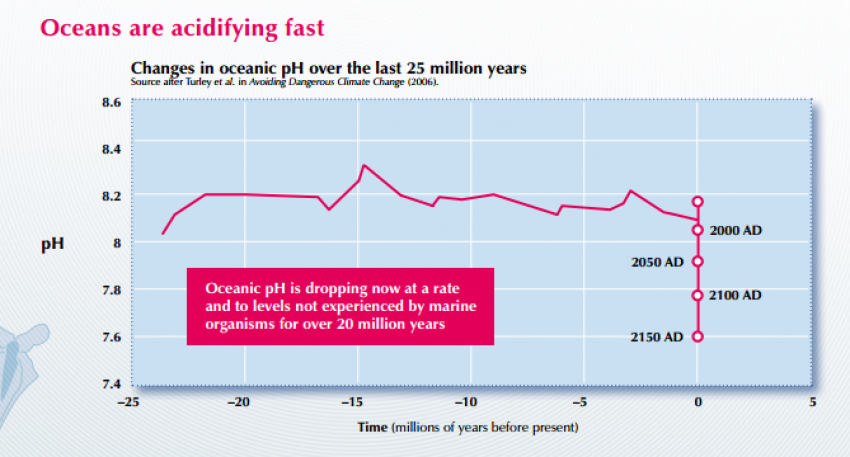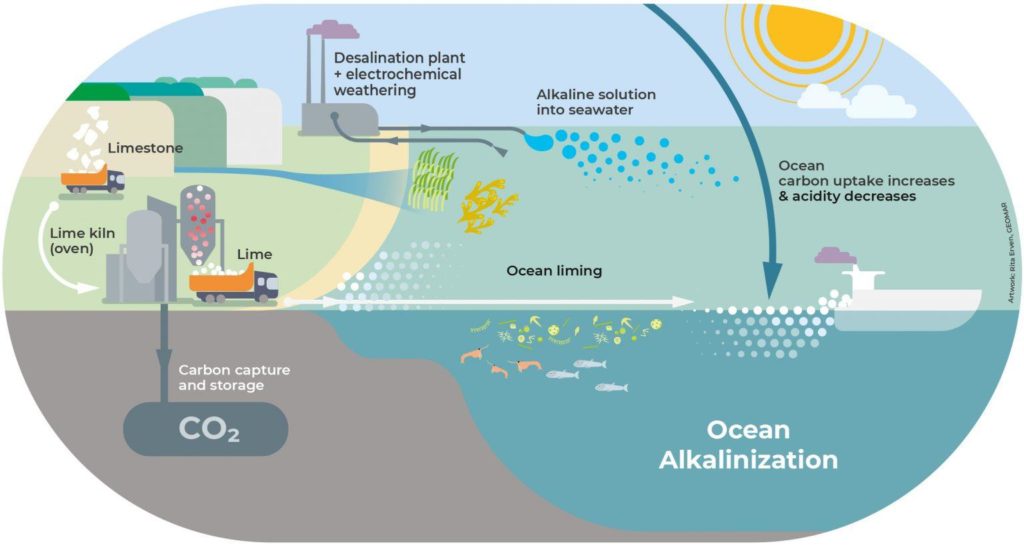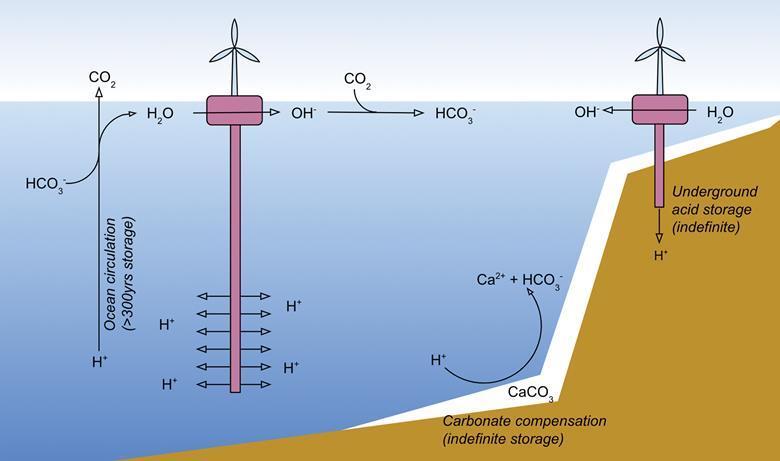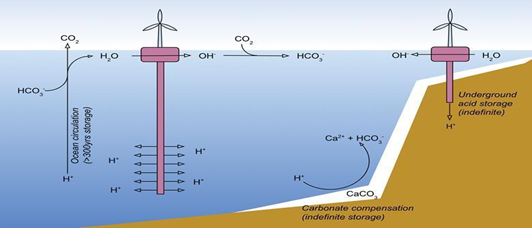Ocean acidification occurs when the pH level of seawater decreases. This is most frequently caused by the ocean absorbing excess CO2 from the atmosphere. Some legislatures have enacted laws that address ocean acidification either directly (as the subject of legislation) or indirectly (through laws that target carbon emissions).
This article will examine laws related to ocean acidification that have been enacted in countries around the world, as well as how they may help address ocean acidification and its consequences.
Background Information: Ocean Acidification Infographic
Table of Contents

Ocean Acidification Laws, Legislations & Bills Around the World
Unified International Policy to Address Ocean Acidification
Ocean Acidification Laws Around the World
There are several laws enacted around the world that work to fix the problem of ocean acidification. While not all of these laws were intended to address ocean acidification specifically, many may still work indirectly to reduce acidification.
United States
- The Clean Air Act
- The main goal of this federal law is to regulate sources of air pollution. It was created by the Environmental Protection Agency (EPA), which sets requirements for all states to provide a strategic plan in order to reduce carbon emissions in order to protect public health and the environment. The law may not be specifically intended to address ocean acidification, but because ocean acidification is caused by an excessive amount of atmospheric carbon, a nationwide reduction in carbon emissions would have a substantial impact on decreasing ocean acidification.
- The Clean Water Act
- The Clean Water Act is another U.S. federal law that focuses on the regulation and prevention of water pollution, and the improvement of water quality in the nation. Through this act, the EPA enacted requirements for industries that produce wastewater, created several initiatives to combat water pollution, and implemented standards for surface water contaminants. The Clean Water Act also empowers the EPA to combat ocean acidification since it can be regarded as toxic or chemically imbalanced surface water.
- Federal Ocean Acidification Research and Monitoring Act
- This federal law mandated the establishment of the Interagency Working Group on Ocean Acidification (IWG-OA). The interagency group is embodied by multiple government organizations led by National Oceanic and Atmospheric Administration (NOAA). The primary goal of the IWG-OA is to conduct research that will provide more information and discoveries regarding the effects of ocean acidification. It also covers the identification of conservation and adaptation plans for marine resources and areas of the country affected by ocean acidification.
State of California
- AB 32 and SB 32: Statewide Greenhouse Gas Reduction
- Assembly Bill No. 32 (signed into law in 2006) required the state to reduce its greenhouse gas (GHG) emissions in order to meet 1990 GHG levels by 2020, while Senate Bill No. 32 (signed into law in 2016) requires the state to cut its GHG emissions to 40% below 1990 levels by 2030. The reduction of emissions will help to lower the amount of atmospheric carbon in the air for the ocean to absorb, thereby reducing ocean acidification.
- SB 1363 (2016): Ocean Protection Council: Ocean Acidification and Hypoxia Reduction Program
- Senate Bill No. 1363 (signed into law in 2016) developed the California Ocean Protection Trust Fund. This fund is meant to support any research and projects that are initiated to tackle the ocean acidification problem. For example, 2021 research on the restoration of eelgrass in California to mitigate ocean acidification occurred due to the support of this bill.
- AB 2139: Ocean Protection Council: Ocean Acidification and Hypoxia Task Force
- Assembly Bill No. 2139 (signed into law in 2016) developed a task force that focuses on research about the effects of ocean acidification in order to provide policy recommendations to mitigate ocean acidification.
State of Oregon
- SB 1039 (2017): Ocean Acidification and Hypoxia Action Plan
- Senate Bill No. 1039 (2017) was created to address the ocean acidification problem in the state. Oregon is impacted by ocean acidification in many ways, including damage to its oyster aquaculture industry. The Oregon Coordinating Council on Ocean Acidification and Hypoxia (OAH Council) was established under this legislation. The main goal of the council is to provide an action plan on how to address ocean acidification and its impact on aquaculture and the environment.
- SB 1554 (2020): Funding for ocean acidification emergency in the state
- Senate Bill 1554 (2020) was created to fund the Oregon Ocean Science Trust. This trust works to support initiatives, projects, and research that will help to address the ocean acidification emergency in the state.
State of Maine
- LD 1679: An Act to Promote Clean Energy Jobs and to Establish the Maine Climate Council
- The bill, passed into law in 2019, established the Maine Climate Council, which conducts studies to identify different factors that cause climate change, warming ocean temperature, and ocean acidification. The council is required to develop guidelines for addressing these environmental problems and adapting to their consequences.
United Kingdom
- Climate Change Act of 2008
- The Climate Change Act of 2008 was enacted to address climate change. Under this law, the government is required to create a Climate Change Risk Assessment (CCRA) every 5 years. The assessment covers the UK’s risks and opportunities from the effects of climate change. The government is also required to establish the National Adaptation Programme (NAP), which creates different projects for the country’s adaptation to climate change. One of these projects is the UK Ocean Acidification Research Programme.
- The Climate Change Act of 2008 also requires the reduction of greenhouse gas emissions, with the goal of becoming “Net Zero” by 2050. This large-scale emission-reduction plan would significantly help to decrease ocean acidification.
New Zealand
- The Climate Change Response (Zero-Carbon) Amendment Act 2019
- The Climate Change Response (Zero-Carbon) Amendment Act of 2019 mandated the establishment of the Climate Change Commission. The commission’s principal goal is to provide scientifically-grounded recommendations on climate change mitigation and adaptation. This law also aims to achieve “Net Zero” greenhouse gas emissions in the country by 2050. It is the duty of the Climate Change Commission to monitor the country’s progress towards this goal and ensure that the country is on track. The law may not be directly aimed at addressing ocean acidification, but as mentioned above, reducing carbon emissions is the main method to reduce ocean acidification.
European Union
- European Climate Law
- The European Climate Law was enacted to support the objectives of the European Green Deal, which aims to ensure the EU is climate neutral by 2050. It also provides milestones that must be met on the way to achieving climate neutrality in 2050. For example, the European Union is required by this law to reduce 55% of its greenhouse gas emissions by 2030. The European Climate Law will establish methods to monitor progress toward their objective and to guarantee that the target of climate neutrality by 2050 can be met. Although ocean acidification is not the primary focus of the law, it may be addressed by major emission reductions across the European Union.
Unified International Policy to Address Ocean Acidification
There is still no direct united international policy to tackle ocean acidification, despite the fact that many claim that it is as important as the other global problems that need to be addressed. Some argue that the United Nations may use the United Nations Convention on the Law of the Sea (UNCLOS) to design and develop a unified agreement that specifically addresses ocean acidification.
However, the 2015 Paris Agreement may help reduce carbon emissions, and thus reduce ocean acidification.
- The Paris Agreement is a legally binding international treaty designed to address global climate change issues. The treaty’s principal objective is to lower global temperatures by 1.5 to 2 degrees Celsius. The treaty required all participating countries to provide their climate action plans by 2020. In their submitted climate action plans, all of the countries agreed on one thing: they pledged to cut their greenhouse gas emissions in order to accomplish the agreement’s objective.
- Beginning in 2024, progress will be tracked through an enhanced transparency framework (ETF), where each of the participating countries will have to submit its progress report for validation.
- While the agreement’s primary goal is to combat climate change in general, ocean acidification may be addressed through the combined greenhouse gas emissions reduction efforts of 192 participating countries and the European Union.



